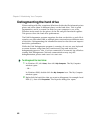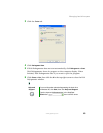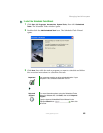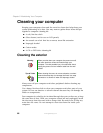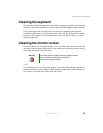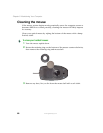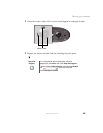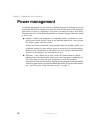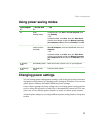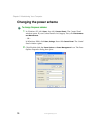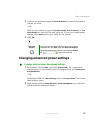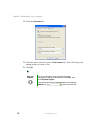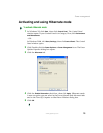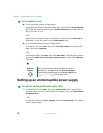70
Chapter 5: Maintaining Your Computer
www.gateway.com
Power management
Computer equipment can account for a significant portion of energy use in the
home and office environment. You may not want to shut down your computer
each time you leave it, especially if you plan to be away for only a short time.
Windows lets you use the following modes to conserve energy when the system
is not in use:
■ Standby – while your computer is in Standby mode, it switches to a low
power state where devices, such as the monitor and drives, turn off and
the entire system uses less power.
Always save your work before using Standby mode. In Standby mode, your
computer reduces or turns off the power to most devices except memory.
However, the information in the memory is not saved to the hard drive.
If power is interrupted, the information is lost.
■ Hibernate – (also called save to disk) writes all current memory (RAM)
information to the hard drive, then turns your computer completely off.
The next time you turn on your computer, it reads the memory
information from the hard drive and opens the programs and documents
that were open when you activated Hibernate mode. For more information,
see “Activating and using Hibernate mode” on page 75.



